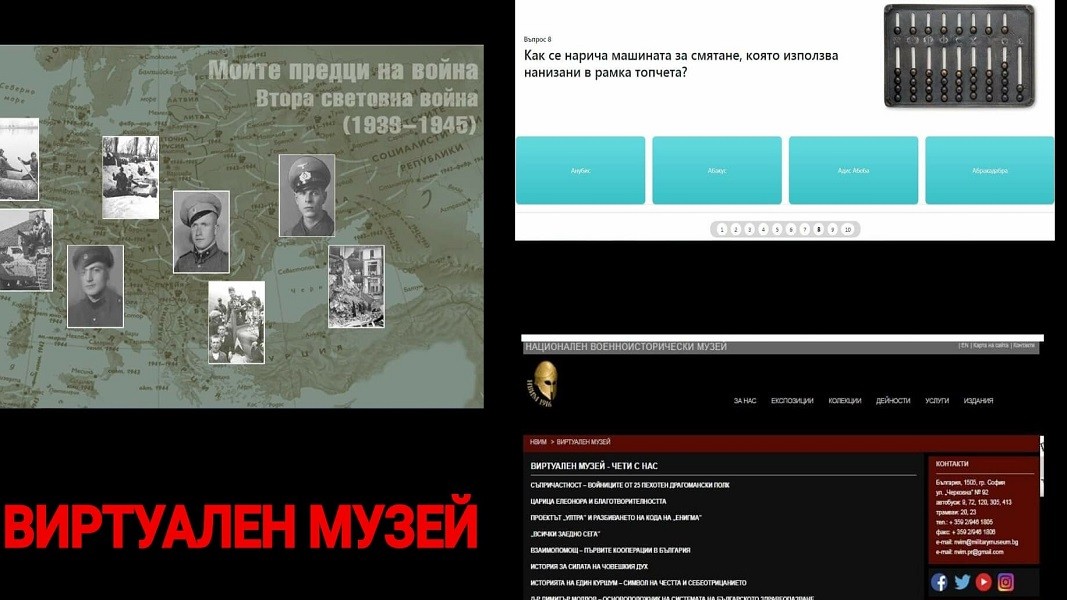Despite changes of the date of celebration over the years, the Day of Bravery and the Bulgarian Army never loses its splendor and solemnity. The respect of Bulgarians for the military remains invariably high today and the sparkling eyes of thousands of people during the traditional military parade on May 6, confirm this every year.
Due to the anti-epidemic measures related to Covid- 19, the parade this year has been canceled. Another site that residents and guests of Sofia often visit during the holiday is the National Museum of Military History. Those wishing to immerse themselves in the glorious past of Bulgarian military will still be able to do it virtually.

The museum has prepared a special program online, available on its website, and on the Facebook page.

Deyana Kostova, director of Museum Marketing, Public Relations and International Affairs has told Radio Bulgaria about an exciting exhibition that is one of the highlights in the program.
 "The first topic we developed online is dedicated to the history and traditions that mark the Day of the Bulgarian Army. Numerous images and various information tell about the holiday from 1885 to the present time,” Ms. Kostova said, adding that the date of the holiday changed a number of times over the years:
"The first topic we developed online is dedicated to the history and traditions that mark the Day of the Bulgarian Army. Numerous images and various information tell about the holiday from 1885 to the present time,” Ms. Kostova said, adding that the date of the holiday changed a number of times over the years:
"A number of photographs have been included, the earliest of which shows the Victory Parade after the Serbo-Bulgarian War, in front of the Holy King Cathedral (Sveti Kral, today’s St. Nedelya) in Sofia in November 1885. This parade started the tradition of celebrating on November 27, the day of the Victory of the Bulgarian Army in the battles at Slivnitsa, as a Day of Military Glory. This was a holiday celebrated until World War I together with April 23 (according to Julian calendar) as a Day of Military Glory. We also show photos of parades that were held during the wars of 1912-1918, as well as during the Second World War. Photographs from the 30s, when celebrated as a Day of Courage and Victory, May 6 was already declared a military holiday and grandiose parades were being realized, are very interesting, too. The exhibition would not have been complete without photographs of the parades after 1993, when by decree of the Council of Ministers on May 6 it was declared Day of Courage and the Bulgarian Army.”
Every year, children are special and most desirable guests of the Museum of Military History. Another initiative aimed at them reveals the history of the Military Order for Courage. It was established by a special decree of Knyaz Alexander I of Battenberg. In violation of the decision of the Berlin Congress of the summer of 1878, which had made forbidden for Bulgaria to have high state honors, the order nevertheless became part of the country's state orders.
Those who are mostly interested in the museum's outdoor exhibit, including a number of military machines that had been in service over the years, are also not forgotten. They will have the opportunity to peek inside from their homes thanks to 360-degree photographs available on the museum's website.
English: Alexander Markov
Photos: @NationalMuseumOfMilitaryHistoryFrom 23 to 28 September, Sofia and Vidin will host the 7th International Conference on the Roman Danubian Provinces on the theme "Frontier Landscapes along the Danube", reports BNR Vidin. The initiative was taken by the University of Ferrara, Italy...
The independence of Bulgaria was proclaimed on 22 September, 1908. After the most audacious independent act in Bulgarian history – the unification of Eastern Rumelia with the Principality of Bulgaria – Bulgarians once again demonstrated the power of..
Bulgarian archaeologists have discovered a second statue in the large sewage channel of the ancient city of Heraclea Sintica. Around 11 a.m. on September 20, the team led by Professor Dr. Lyudmil Vagalinski came across another marble sculpture near..
Archaeologists have discovered a very rare and valuable glass bottle in a 2nd-century tomb in the southern necropolis of the Roman colony Deultum near..

+359 2 9336 661
